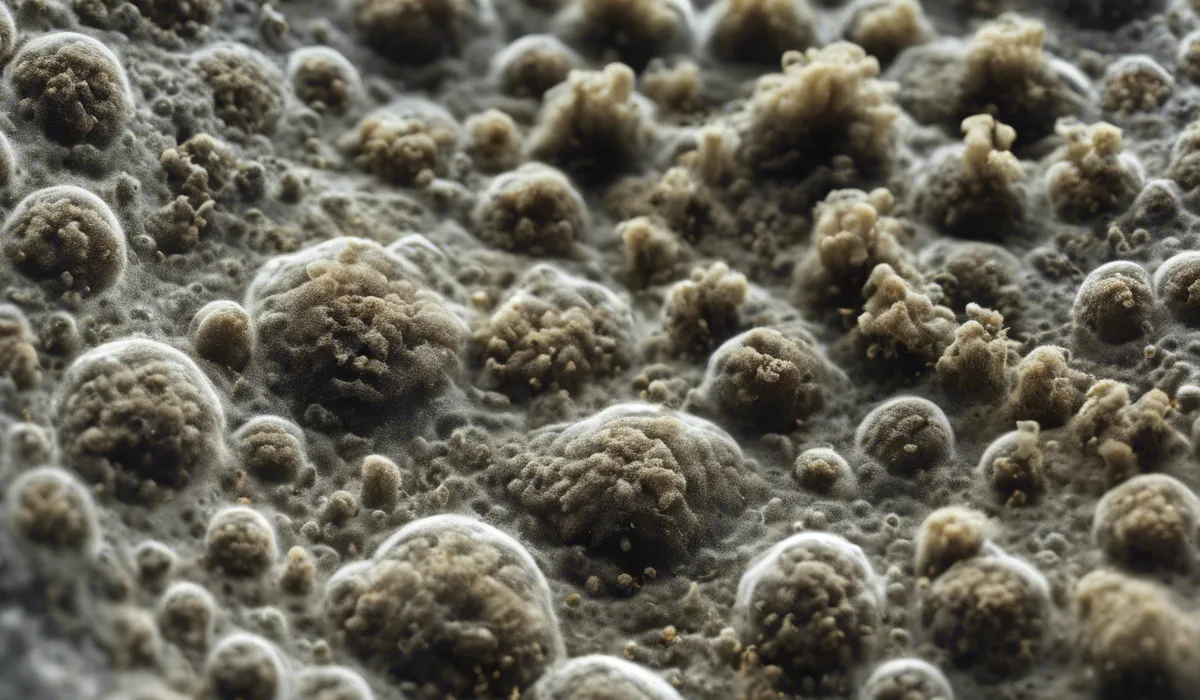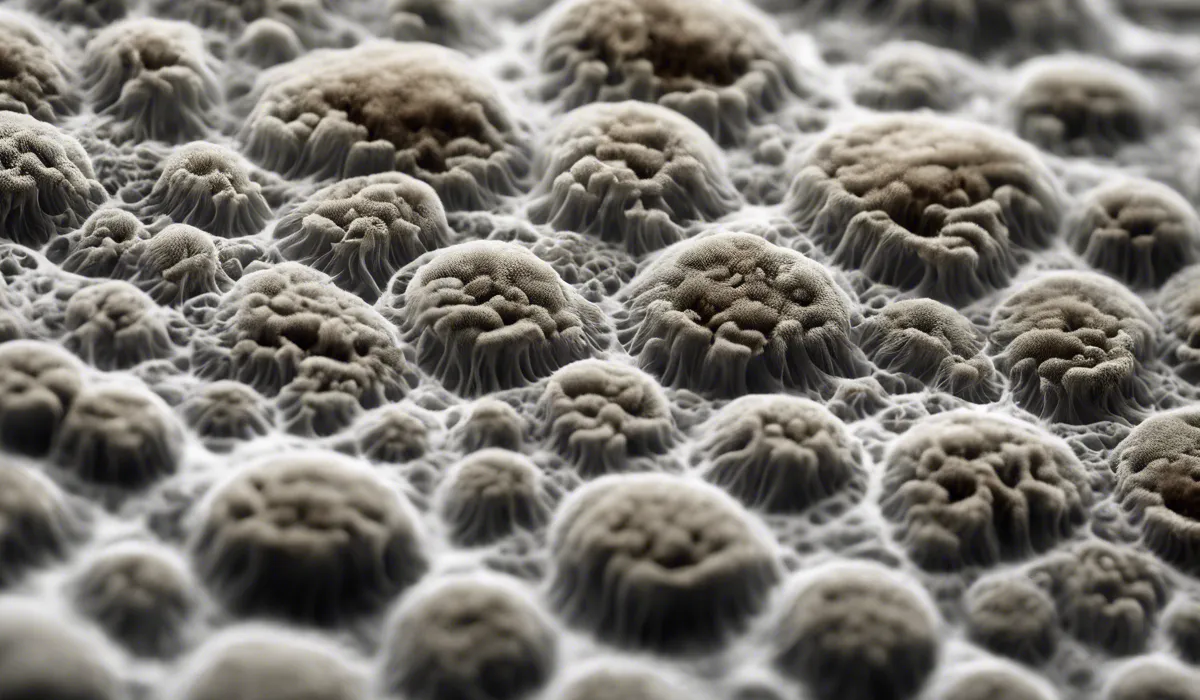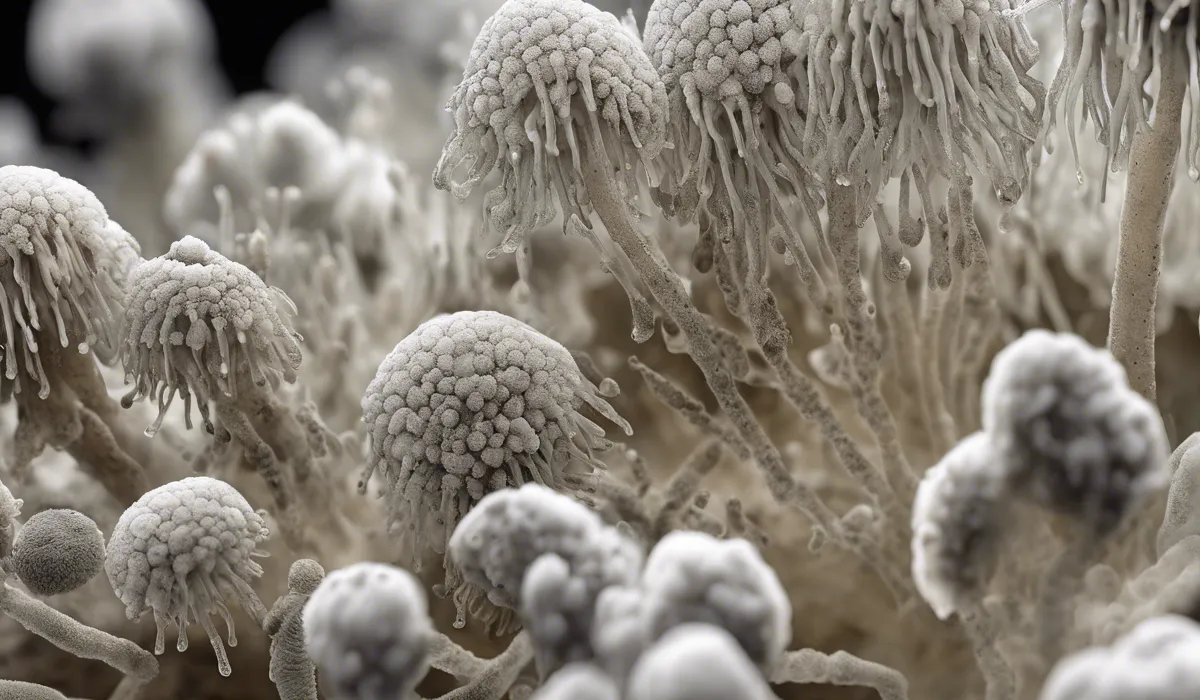Mold spores are tiny, microscopic entities not visible to the naked eye. Under a microscope, they appear as round, oval, or thread-like structures. Their color can vary, ranging from white to green, brown, or black depending on the mold type.
Understanding Mold Spores

What Are Mold Spores?
Mold spores are tiny seeds of mold. Think of them like the seeds of plants, but much smaller.
These spores float in the air, indoors and outdoors. They are so small that we can’t see them with just our eyes.
Mold uses these spores to spread and grow in new places. When they land on a spot with enough moisture and food, they start to grow into what we know as mold.
The Life Cycle of Mold
Every living thing has a life cycle, and mold is no different. Mold spores start the cycle. They are like tiny dots of life waiting for the right place to grow. When they find a wet or damp spot, they start to grow into mold colonies.
This is how mold can appear in our homes, especially in damp places like bathrooms and kitchens.
Spores vs. Colonies
Mold spores and mold colonies are not the same. A mold spore is just the beginning, a single seed.
A mold colony is a big family of mold, all growing together. You can see a colony with your eyes because it is made up of lots of spores that have grown up.
A colony can be fuzzy and might look green, black, or white. Spores are what start colonies, but they are too small to see without help.
Identifying Mold Spores

How Big Are Mold Spores?
Mold spores are super small, about the size of a speck of dust. This means you won’t see them without using a microscope.
Under a microscope, they can look like tiny round or oval shapes, or sometimes like little threads. Their small size helps them float through the air and find new places to grow.
Colors of Mold Spores
Mold spores come in different colors. Some are white, while others can be green, brown, or black.
These colors help us know what kind of mold we are looking at. But you can’t tell the color of a spore without a microscope because they are too small to see.
Where Do Mold Spores Like to Grow?
Mold spores like damp and warm places. They can grow in homes, especially in places like the bathroom or the kitchen where there is a lot of moisture.
They also like to grow outside in the dirt or on dead leaves. Any place that is wet and has stuff that mold can eat is a good place for spores to become mold.
Finding Mold Spores
Since we can’t see mold spores with our eyes, we use tools to find them. Scientists use microscopes to look at mold spores up close.
There are also mold testing kits that can tell us if there are mold spores in the air. These kits help us find out if we have a mold problem in our homes.
Mold Spore Appearance Under Magnification

Looking at Mold Spores Up Close
When we use a microscope to look at mold spores, we can see amazing details. They can look like little balls, or like threads, or even like shapes we can’t quite describe. Each mold type has spores that look a bit different.
This helps scientists tell them apart. Looking at mold spores under a microscope is like exploring a tiny world we never knew was there.
Different Kinds of Mold Spores
There are many kinds of mold, and each one has its own kind of spore. Some spores are smooth, while others have patterns on them.
These patterns can look like lines or dots, or other shapes. By looking at these patterns, scientists can figure out what kind of mold a spore might grow into.
Unique Spore Features
Some mold spores have special features that make them unique. For example, some have little tails, while others have wings.
These features can help the spores move through the air better. They can also help the spores stick to surfaces where they can grow. Each type of mold has spores that are just right for helping it survive and spread.
Visual Examples of Mold Spores
Scientists take pictures of mold spores under the microscope. These pictures show us the amazing variety of shapes and colors that mold spores can have.
There are also drawings and illustrations that show what different kinds of spores look like. These pictures and drawings help us understand the tiny world of mold spores better.
FAQs About Mold Spore Appearance
What do mold spores look like under a microscope?
Under a microscope, mold spores appear as round, oval, or thread-like structures.
Can you see mold spores with the naked eye?
No, mold spores are microscopic and cannot be seen without magnification.
What color are mold spores when viewed microscopically?
Mold spores can appear white, green, brown, or black, depending on the type of mold.
Do mold spores have a uniform shape?
No, mold spores can be round, oval, or thread-like, varying with the mold species.
Does the color of a mold spore indicate its species?
While the color can provide a clue, it is not a definitive indicator of the species, as color can vary within a species and overlap among different species.
Final Thoughts
Mold spores, undetectable without magnification, present themselves in diverse shapes such as round, oval, or filamentous forms when observed under a microscope.
Their hues also vary widely, with a spectrum that includes white, green, brown, and black, reflective of the mold species they originate from.
